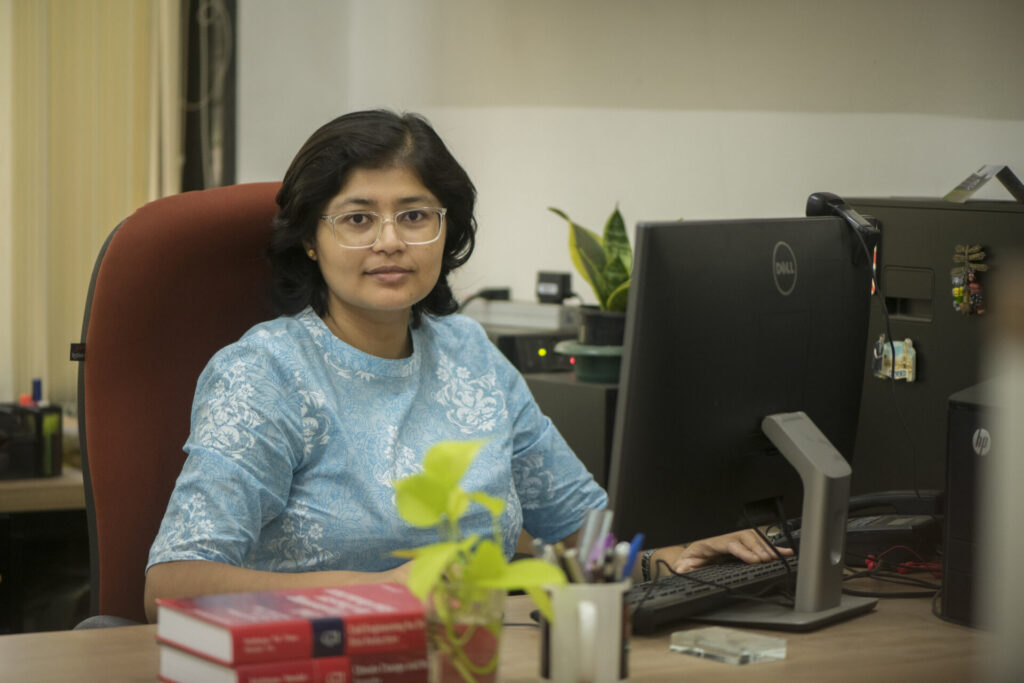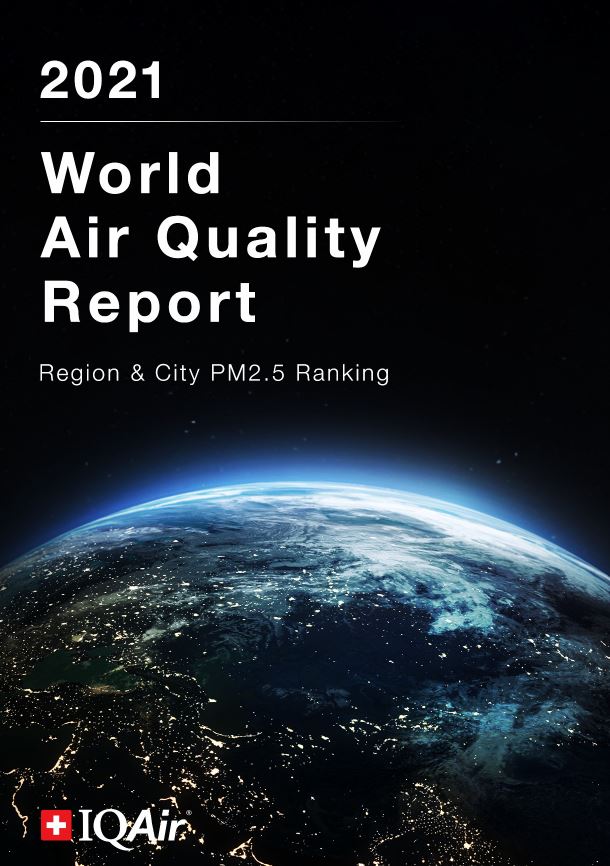The summer of 2022 will be remembered as a brutal season in the history of climate change. Heatwaves killed at least 90 people in India and Pakistan, as the temperature soared as high as 46-48 degrees centigrade. Europe saw heatwaves fueling fires that raged across Portugal, Spain, and parts of France. In China, a severe drought led to crop loss shrinking of the river Yangtze, also known as the life-giving river of the country.
Extreme heatwaves have a crippling impact on mankind across the globe. However, they affect nations differently. While low-income countries have historically contributed little to greenhouse gas emissions, they bear the most adverse consequences of rising temperatures as they are situated in some of the hottest parts of the Earth, according to International Monetary Fund (IMF).
Based on a study by Burke, Hsiang, and Miguel (2015), the IMF notes that in countries with a relatively hot climate, a 1°C increase in temperature with an average annual temperature of 25°C, the per capita output reduces by up to 1.5 percent, a loss that persists for at least 7 years. Close to 60 percent of the world’s population currently resides in countries where an increase in temperature would likely lead to such pernicious effects, it says.
While reducing carbon emissions is the only real solution to stall heatwaves, enduring them requires much planning. Heat Action Plan is now part of urban planning in major cities across the world.
The South Asian Heatwave
For countries like India and Pakistan, where a large part of the population subsists on manual labour, this year’s heat waves were a test of human endurance.
In India, it was the hottest summer in 122 years, the time ever since weather data recording started, according to a study by the World Weather Attribution (WWA), a collaboration between climate scientists at Imperial College London, UK, and the Indian Institute of Technology (IIT) Delhi, among several other universities. The project, which brought researchers from 20 universities and research institutions brings forth some stark facts reminding us that climate change is real and its impacts are deadly.
It was a ‘rare’ event, with the probability of occurrence once in a hundred years, given the present climate warming of 1.2 degrees centigrade is constant, the WWA said.
The probability of such an event could become once in 50 years, or even once in ten years, when the earth’s temperature is warmer by about 2 degrees centigrade, Krishna AchutaRao, Professor and Head, Centre for Atmospheric Sciences Affiliate Faculty, School of Public Policy, IIT, Delhi, told DDRN in a telephonic interview.
“With further warming of the planet by 0.8 degrees Celsius, thus bringing the global warming levels to 2 degrees Celsius above pre-industrial levels, such temperatures can be expected to occur more frequently, once every ten years,” Mariam Zachariah, Research Associate at the Grantham Institute, Climate Change and the Environment, Imperial College London, told DDRN over an email interview.
Heatwaves in the subcontinent are increasingly becoming frequent, even as the one this year surpassed all records. Over 6,100 people have died in India due to heat waves in India alone over the span of nine years (2010-18), according to data from IndiaSpend.
“The 2022 temperatures are a precursor of hotter summers in the future. As the globe continues to warm and the climate shifts to warmer regimes, we can expect hotter days to become more frequent, and temperatures that would have been unusual in the past to become common,” said Zachariah.
Two phenomenon makes this year’s heatwave in South Asia, like many other parts of the world, especially stark—the spatial extent and duration of the heatwave.
“It started in March and persisted in April. These months typically do not stay this warm over such a vast region in India and Pakistan. There were individual stations that hit a temperature of 46-48 degrees Celsius. But it wasn’t those individual records that mattered. The fact that the temperature was above 40 degrees Celsius for such a long period of time is a matter of concern. Low temperatures were also around 30 degrees Celsius,” said AchutaRao.
Socio-Economic Cost
This year’s heatwave resulted in a nearly 20 percent reduction in India’s expected wheat production, according to early estimates by the Indian government. This forced the Indian government to put a ban on wheat exports, aggravating the existing food grain shortage amidst the war in Ukraine. Within India, the consequences of a short crop had a marked impact on the small and marginal farmers, who account for more than 70 percent of India’s farming community.
“About 60 percent of India’s workforce is in agriculture, and if people are not able to work in fields, we have a direct consequence of that on the food security. But that’s a huge economic loss, not only in terms of food security but also in how farming is done in India. We have small farm holdings, and if farmers lose 20 percent of their yield, it has a huge impact on them,” said AchutaRao.
There are other dimensions of the socio-economic impact of the heatwave as well. India’s power consumption broke all records in the month of June, leading to blackouts and disruption of industrial production. A large number of people in India and Pakistan are employed in the construction sector requiring heavy manual labour. In India, the construction sector is the third-largest employer outside agriculture, employing a workforce of 46 million people, according to data from the Center for Policy Research (CPR).
“In South Asia, not only the temperature goes but also the humidity goes up. So, when you have this combination, it gets very difficult for the human body to cool off. Decades of rising temperature and humidity are pushing people toward the edge of what human beings can survive. For people involved in manual labor like construction and road work, the bad weather has an impact on health and productivity. The impact of a heatwave is not only limited to individuals but ranges from industries to agriculture,” said AchutaRao.
“South Asia is certainly more vulnerable to climate change than some of the more developed countries, on account of the dependence of a large proportion of the population in this part of the world on agriculture and manual labour for their livelihood…Apart from temperatures, the effect of climate change is reported in rainfall distributions, resulting in more heavy rainfall episodes and prolonged droughts, which also impact the agrarian community,” said Zachariah.
Air Pollution Adding to the Problem
While climate change is a global concern, the pollution levels in South Asia add to the problem.
Data from World Air Quality Report, 2021 says that Central and South Asia is home to 46 of the world’s 50 most polluted cities. India and Pakistan generally experience the worst air quality in this region, with 48 percent and 67 percent respectively of cities having PM2.5 concentrations greater than ten times acceptable according to the World Health Organization (WHO).
Research on the effect of a combination of air pollution and heat by Grigorieva and Lukyanets says that increments in PM2.5 and PM10, O3, CO, and NO2 concentrations during periods of high temperature are dramatically associated with higher admissions to hospital in patients with comorbidities.
In most climate studies, aerosols in air pollution are assumed to be a cooling agent as they have sulfates that reflect the radiation of the sun back into space. However, in the case of most cities in South Asia, the environment has aerosols with carbon, which act as heat absorbents, Arpita Mondal, Associate Professor, Department of Civil Engineering and interdisciplinary programme (IDP) in Climate Studies, IIT Bombay, told DDRN over a telephonic interview.
“What is unique in South Asia is that we have a lot of absorbing aerosols, which is a result of biomass burning– a big issue in North India. Because we have aerosols with carbon, they are contributing to heating rather than cooling. We have done studies where we have shown that periods of high heat coincide with high heat absorbing aerosols,” said Mondal.
Collective Action
Combating heatwaves requires collective action, though much of which hinges on developed nations, which have been major contributors to global emissions. Nearly 79 percent of emissions between 1850 and 2011 are contributed by the developed nations, according to data from the Center for Global Development.
“Advanced and emerging market economies have contributed the lion’s share to actual and projected warming. Hence, helping low-income countries cope with its consequences is both a moral duty and sound global economic policy that helps offset countries’ failures to fully internalize the costs of greenhouse gas emissions,” says IMF.
“The problem with heatwaves, unlike air pollution, is that it is not the consequence of a region-specific problem. It is the net result of what every country in the world is emitting. If we historically look at emission levels, we see the developed world has contributed most to the emissions. Whatever global warming we see today is to a large extent the impact of industrialisation in the developed world. Everyone who is emitting is adding to the problem,” said AchutaRao.
One of the possible ways to deal with the problem is rolling out heat action plans. New York, Toronto, Paris, and Madrid are some among the many cities that have been successful in this endeavour, according to the Review of the Heat Action Plan, 2021 by the Integrated Research and Action for Development (IRADe).
In the Indian context, the heat action plan of Ahmedabad, a city in Gujarat in India is seen as a success story. After a massive heatwave in 2010, a heat action plan was rolled out by the city in 2013. In 2015 when there was another heatwave, the city could deal with the problem effectively, reducing the number of potential casualties and economic losses. The plan included increased preparedness, information sharing, and response coordination to reduce the health impacts of extreme heat on vulnerable populations. Some of the direct measures to tackle the heatwave included the identification of color signals ahead of heatwaves, a public warning system, and increased preparedness of hospitals to treat the cases of heat strokes.
However, overall, South Asia lacks planning for heatwave management. Research by Sharma et al., on consequences and adaptation strategies for heatwaves, points out that, only a few South Asian countries have functional heatwave management plans, with the community and residential preparedness missing. It recommends adaptation strategies such as blue-green spaces, indoor passive cooling, infrastructural adjustments, and heat action plans, to mitigate the impact of heat waves.
As climate change turns out to be a reality, heat waves are likely to be recurrent events. Extreme climates, especially heatwaves, will have a direct and indirect effect on all countries, be it in terms of food security, economic losses, or the basic survival of human beings. While measures like heat action plans and increased preparedness might be ways to deal with heat waves, these would only be temporary fixes to a problem that is likely to aggravate year after year. Emission cut is the only permanent solution to the problem.
Namrata Acharya is a journalist with bylines in Al Jazeera, South China Morning Post Zenger News, Mongabay, The Wire, The Juggernaut, KR- Asia and more.

Dr Mariam Zachariah, Research Associate at the Grantham Institute – Climate Change and the Environment, Imperial College London.
Zachaiah works on near-real time attribution of extreme events, attempting to discern whether and to what extent does human-induced climate change may have influenced its characteristics. Much of her work is carried out as part of World Weather Attribution, Vulnerability and Exposure (V&E) and social sciences to carry out rapid attribution assessments in the immediate days following an impactful extreme event. Prior to joining the Grantham Institute in February 2022, she was a PhD scholar at the Indian Institute of Technology Bombay (IITB), in India. In recognizing the heavy dependence of the Indian economy on agriculture, which in turn, is vulnerable to climate elements, her doctoral research centered on discerning the role of droughts and extreme temperature on agricultural yields in India, with a particular focus on major agrarian regions in the country.

Arpita Mondal. Associate Professor, Dept of Civil Engineering and IDP in Climate Studies, Indian Institute of Technology (IIT). Bombay
Arpita’s research has been focused on hydroclimatic extremes such as heat waves, heavy rain, floods, droughts, climate change, detection and dttribution and statistical spatio-temporal modeling of extremes, among other subjects. She was also a part of WWA study on heatwave in South Asia. She is also the Associate Editor of AGU’s journal Earth’s Future.

Dr. Krishna AchutaRa, Professor and Head, Centre for Atmospheric Sciences. Affiliate Faculty, School of Public Policy. Indian Institute of Technology (IIT), Delhi.
Krishna AchutaRao has been with the Centre for Atmospheric Sciences, IIT Delhi since 2007. His research has focused on using climate models to understand how earth’s climate is affected by natural, anthropogenic factors as well as how it will impact natural and human systems. He was also a part of the study by World Weather Attribution (WWA) on heatwaves in South Asia, a collaboration between climate scientists at Imperial College London, UK, with global universities. He has also been associated with various assessments of the Intergovernmental Panel on Climate Change (IPCC) since 2001 and is a lead author on the Sixth Assessment Report Working Group-I. He also serves as a member of the CLIVAR Scientific Steering Group as well as on numerous national and international research advisory and review panels.




